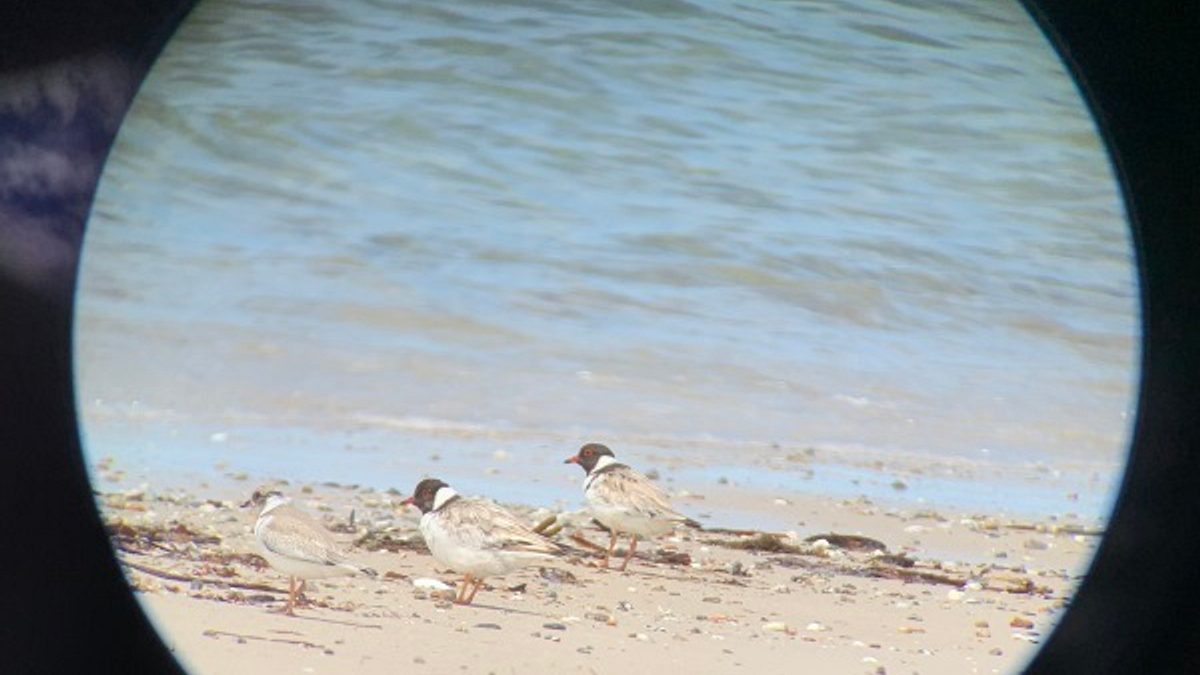Threatened Hooded Plovers’ breeding success on Eyre Peninsula
Local landscape officers and BirdLife trained volunteers are encouraged to learn at least six Hooded Plover chicks have made it to flying age across Eyre Peninsula beaches during the past breeding season.
The Hooded Plover is a resident beach nesting bird listed as a threatened species under the Environment Protection and Biodiversity Conservation (EPBC) Act. They lay their eggs in a shallow scrape on the beach above the high tide mark between August and April, leaving them susceptible to a variety of disturbances including off-leash dogs, vehicles driving on the beach and introduced predators, such as cats and foxes.
Eyre Peninsula Landscape Board Landscape Officer, Rachael Kannussaar says she is pleased the efforts of staff and volunteers have likely contributed to helping a number of Hooded Plover chicks reach the fledgling stage this season, however there is more work to do to boost their success.
“Hooded Plovers have a very low nesting success rate,” Ms Kannussaar says.
“On Eyre Peninsula, monitoring during the 2020-21 breeding season has revealed only one in five nests successfully hatched, and of the nests that were able to hatch, only one in five chicks reached flying age 35 days later.
“These rates are lower than is required to reach the national goal for maintaining the Hooded Plover population.
“On Eyre Peninsula, 23 Hooded Plover pairs were visited regularly to monitor nesting progress and document threats across the nesting season. To have six known chicks fledge across the Eyre Peninsula region is a good outcome, however this is five less than last year.”
Management actions were implemented at some locations to increase their chances of nesting success including installing temporary signage to protect nesting sites and implementing targeted predator control at some locations.
“Monitoring by our officers and BirdLife volunteers has revealed the regular presence of fox tracks along the beaches in some areas on southern Eyre Peninsula such as south of Tumby Bay,” Ms Kannussaar says.
“The presence of foxes is highly likely affecting Hooded Plover nests reaching the hatching stage and chicks successfully fledging in some areas.
“Officers worked with landholders on southern Eyre Peninsula near Tumby Bay to implement a coordinated fox control program along a 20km stretch of coastline, adjacent to 10 known Hooded Plover nesting territories.
“We plan to carry out further control work soon, to coincide with the start of the 2021– 22 Hooded Plover breeding season.
“Regular surveys will continue to help us learn more about the Hooded Plovers on Eyre Peninsula, and the beaches where they are nesting.
“This information is critical for us to understand the threats Hooded Plovers are facing and to help guide the future conservation and management of this threatened species on Eyre Peninsula.”
The Eyre Peninsula Landscape Board also urges all beach-goers to look out for signs that alert visitors to the presence of the birds during nesting; and asks visitors to give them a helping hand by sticking to the water’s edge, keeping dogs on leads and staying well away from any nests, eggs or birds.
Increased monitoring of Hooded Plovers began in 2019 and will continue until 2023 as part of the Protecting the Hooded Plover and Eyre Peninsula’s Saltmarsh Threat Abatement and Recovery projects. These projects are supported by Eyre Peninsula Landscape Board, the Glenelg Hopkins Catchment Management Authority and BirdLife Australia through funding from the Australian Government’s National Landcare Program.
If you are interested in becoming a trained volunteer to help with bird monitoring, please contact us on 8688 3200 or email EPLBAdmin@sa.gov.au.
Find out more about our Saltmarsh Threat Abatement and Recovery project.



